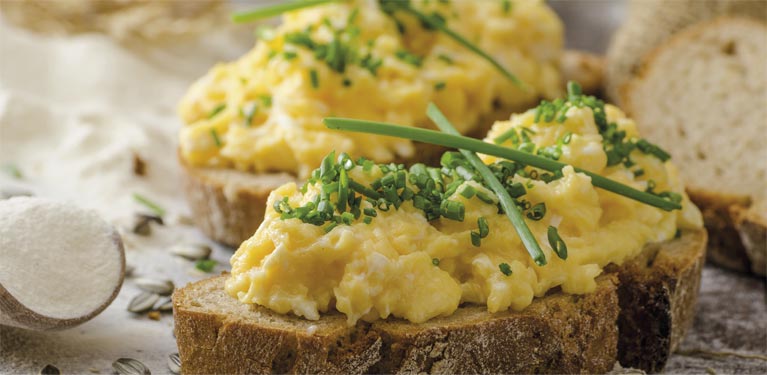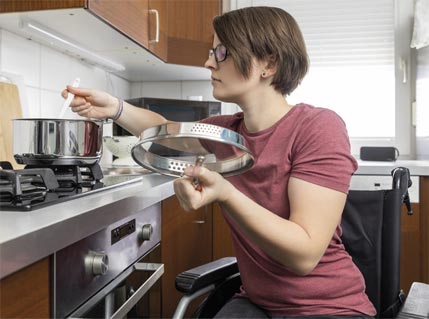
If you are less physically independent since your injury, then you may have found it harder to keep your muscle strength up. Muscle strength helps our bones to hold on to their internal minerals that make up their structure, which in turn makes them strong and better able to support our muscles for us to mobilise ourselves. A natural part of anyone’s aging process is for bones to start gradually releasing their minerals, but this can happen prematurely and quicker after a spinal cord injury.
Weaker bones are more prone to ‘compression’ fractures that can happen when you are mobilising yourself, or when you are helped to move by others. If a fracture happens then this might reduce how able you are to do your usual activities while they heal. What you eat and drink can influence the structure of your bones therefore you can help keep your bones strong through your nutrition choices.

The main mineral which gives our bones structure is calcium therefore consuming enough high-calcium foods can minimise the amount of minerals our bones release. To absorb the calcium from what we eat and drink we need enough vitamin D levels in our blood. Collagen is also key to building and maintaining the healthy structure of our bones; when we eat foods containing protein, our bodies can digest and then use them to produce collagen. Vitamin C and zinc also help our bodies form the collagen.
Our Top tips
- Have at least 3 portions of high calcium food and drinks a day and you might like to have one at each meal, or as part of a snack if you are trying to regain lost weight. High-calcium foods are milk, yoghurt, cheese, tofu, and tinned fish that still contain the soft bones e.g. salmon or pilchards, but also some plant-based dairy alternatives and cereals that on their label show added calcium. There are some serving size suggestions in our ‘Living with a Stoma Nutritional Guide’.
- We might not be able to produce enough Vitamin D if we do not get much time in the sun or have non-pale skin, nor consume enough because levels in food fluctuate throughout the year. Foods that are labelled as ‘high in vitamin D’ can include certain brands of eggs, mushrooms, cereals, plant-based dairy alternatives, but also oily fish like salmon. Low vitamin D levels affect many people even without a spinal cord injury and so the NHS recommends people consider taking a 10 microgram vitamin D supplement each day – speak with your pharmacist or doctor before starting this to check it does not interfere with any medications you’re prescribed.
- Aim for a quarter of your plate at each meal to contain a high-protein food to help your body to produce collagen: these foods are also high in zinc. Some examples are meat, poultry, fish, eggs, tofu, ‘mince’ made from soy or mycoprotein, cheese, milk, and yoghurt. There are some suggested portion sizes in our ‘Living with a Stoma Nutritional Guide’.
- To get enough vitamin C, aim for 5 or more fruits and vegetables a day, eating a variety across the day and week. You could have a third of your meal as vegetables, or half if you are aiming to reach a slimmer size or shape.
